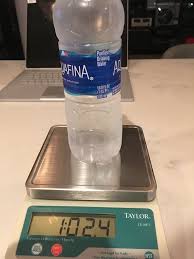How to find Volume Using Density and Mass

Understanding volume is a fundamental concept in science and engineering, often requiring various methods to measure or calculate it accurately. One of the most efficient ways to find volume involves utilizing the relationship between density and mass. By harnessing this connection, you can determine the volume of an object or substance with precision. This article will provide you with a step-by-step guide on how to find volume using density and mass.
Understanding the Basics
Before delving into the intricacies of volume determination, let’s clarify the essential concepts involved:
- Volume: It refers to the amount of space occupied by an object or substance. In scientific terms, it is often measured in cubic units (e.g., cubic meters, cubic centimeters).
- Mass: This represents the amount of matter in an object and is typically measured in grams or kilograms.
- Density: Density is the ratio of an object’s mass to its volume. Mathematically, it is expressed as density = mass / volume. The units of density commonly used are grams per cubic centimeter (g/cm³) or kilograms per cubic meter (kg/m³), depending on the scale of measurement.
The Density-Mass-Volume Relationship
The relationship between density, mass, and volume is defined by the formula:
Density=MassVolume
Step-by-Step Method to Find Volume using Density and Mass:
Step 1: Gather Necessary Information
Collect the data required for your calculation. You’ll need the following:
- Mass: Obtain the mass of the object or substance in question. Measure it using a balance or scale, ensuring units are consistent (grams or kilograms).
- Density: If the density of the material is known, use this value directly. If not, refer to reliable sources like textbooks, online databases, or experimentally determine the density through various methods (e.g., water displacement method for irregular solids).
Step 2: Rearrange the Density Formula
Rearrange the density formula to solve for volume:
Volume=MassDensity
Step 3: Perform the Calculation
Plug in the values into the rearranged formula obtained in step 2:
Volume=MassDensity
Substitute the known mass and density values into the equation and perform the division to calculate the volume.
Step 4: Verify Units and Accuracy
Ensure the units are consistent throughout the calculation. For instance, if the mass was measured in grams and density in grams per cubic centimeter, the resulting volume should be in cubic centimeters.
Example Calculation:
Let’s assume you have an object with a mass of 200 grams and a known density of 5 g/cm³.
Volume=MassDensity
Volume=200 g5 g/cm³=40 cm³
Hence, the volume of the object is 40 cubic centimeters.
Conclusion
Utilizing density and mass to find volume is a powerful technique applicable across various fields, including physics, chemistry, and engineering. By understanding the relationship between these parameters and following the outlined steps, you can accurately determine the volume of different materials or objects. Mastering this method not only enhances your understanding of basic scientific principles but also equips you with a valuable tool for practical applications in real-world scenarios.





